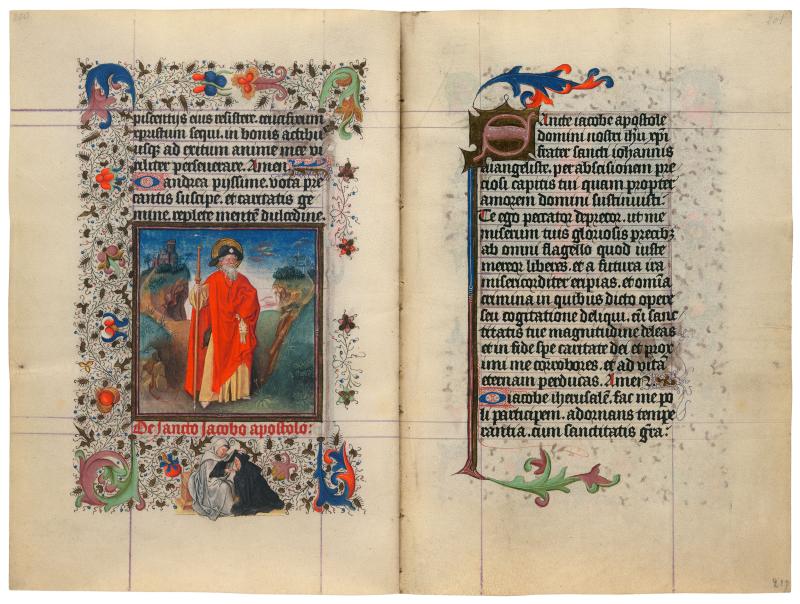
St. James the Major
Purchased on the Belle da Costa Greene Fund with the assistance of the Fellows, 1963
The relics of St. James lie in Santiago de Compostela in Spain, a major site for Christian pilgrims of the middle ages and today. Standing in a landscape, the depth of which suggests a long journey, the apostle is dressed for pilgrimage. The wide brimmed hat with mounted shell, the walking staff, and the pouch at his side are all attributes of medieval pilgrimage; even the girdle book he carries is bound for travel in an enveloping binding. Puzzling are the two small figures in the border: a kneeling woman in black who gives something to a seated man in white cloak. The woman may be a pilgrim receiving a blessing before setting out on her journey. A similar figure appears in the borders of pages 206 and 221. The pair resembles the two figures praying in the Deathbed scene (p. 180).
